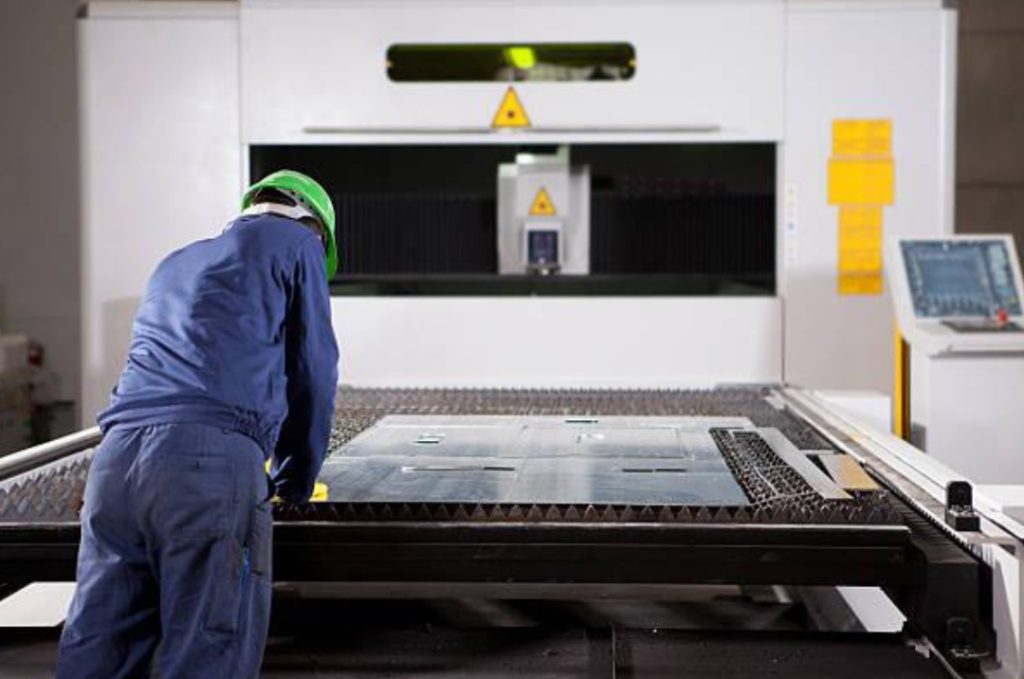What is a Sheet Metal Fabricator and How to Find?

Sheet metal fabrication remains an essential process in various industries. This intricate craft transforms flat metal sheets into precise shapes and components using specialized techniques and tools. Keep reading as we delve into what a sheet metal fabricator does, the common techniques used in the fabrication process, and tips for selecting a qualified sheet metal fabricator for your project.
Table of Contents
What is a Sheet Metal Fabricator?
A sheet metal fabricator is a skilled professional or machine that shapes and forms metal sheets into various products and components. This process involves cutting, bending, welding, and assembling metal pieces to create custom parts. The fabrication process is essential for building durable parts that can withstand harsh conditions.
Sheet metal fabricators manipulate metal using various tools and techniques, ensuring each piece meets the desired specifications. They work with different types of metals, such as aluminum, steel, copper, and brass, each of which requires unique handling and processing methods.
The skill of a sheet metal fabricator is essential for guaranteeing the precision and high quality of the finished product. They must understand the properties of different metals, the capabilities of their equipment, and the project’s requirements to produce quality components that meet industry standards.
Common Techniques in a Sheet Metal Fabricator
Sheet metal fabrications involves various techniques for shaping and transforming raw materials into finished products. Understanding these standard techniques is essential for producing quality metal products efficiently.
Check the common techniques in sheet metal fabrication below:
Blanking
Blanking involves cutting a large metal sheet into smaller, manageable pieces using a punch and die set. The punch forces the metal sheet through a die, creating a precise cut-out shape.
This method is vital for mass production because it rapidly creates numerous identical parts with minimal waste. Blanking is typically the first step in many fabrication processes, setting the stage for subsequent operations like bending and welding.
Bending
Sheet metal bending involves deforming the metal along a straight axis to achieve the desired angle or shape. Fabricators carry out this process using press brakes, which apply force via a punch and die to bend the metal sheet. Bending is essential for creating parts with complex geometries and adding structural strength.
Furthermore, bending accuracy relies on careful calculation of the bend allowance (the length of the bend) and compensation for spring-back (the metal’s tendency to return to its original shape after bending). Standard bending methods include air bending, bottom bending, and coining. Each technique offers different levels of precision and force.
Benching
Benching is the manual process of refining and adjusting metal parts. Skilled fabricators use various hand tools, such as files, hammers, and anvils, to smooth edges, correct shapes, and ensure components fit together perfectly. This technique is often employed for custom or small-batch projects requiring high precision and meticulous attention to detail.
Benching can involve deburring (removing rough edges), polishing, and fitting parts to ensure seamless assembly. It is a critical step in achieving the final finish and quality of the metal product.
Welding
Welding involves melting and combining two or more metal pieces to form a strong connection. This technique uses heat and sometimes pressure, with or without filler material, to achieve the desired weld. Welding is vital for assembling complex structures and ensuring their strength and durability. Moreover, the quality of the welds significantly impacts the final product’s integrity and performance.
Different welding methods are used depending on the material and application. This includes
TIG (Tungsten Inert Gas) Welding, MIG (Metal Inert Gas) Welding and Spot Welding.
How to Select a Qualified Sheet Metal Fabricator

Selecting a qualified sheet metal fabricator involves carefully considering various factors to ensure your project’s success. These include capabilities, production quantities, and cost, among others. It’s best to consider these factors to find a fabricator that can meet your specific requirements and deliver high-quality results.
Here are the key aspects to evaluate:
Certification
Certifications testify to a fabricator’s adherence to industry standards and best practices. Look for fabricators with certifications such as ISO 9001, which ensures quality management systems, or other industry-specific certifications relevant to your project.
Certified fabricators are likely to have stringent quality control processes. They must also be dedicated to upholding high standards to minimize the likelihood of mistakes and defects in your project.
Capabilities
Assessing a fabricator’s capabilities is essential to ensure they can handle your project’s specific needs. This includes evaluating their services, such as cutting, bending, welding, and finishing. Additionally, consider the technology and equipment they use.
Advanced machinery and tools, like CNC machines and laser cutters, can enhance precision and efficiency. Therefore, ensure the fabricator has experience working with the type of metal and thickness required for your project.
Quantities
The quantity of parts or components you need can significantly influence your choice of fabricator. Some fabricators specialize in small batches or prototypes, while others are equipped for large-scale production runs.
It is important to find a fabricator whose production capabilities align with your project’s volume requirements. Discussing your production needs upfront ensures the fabricator can accommodate your order size without compromising quality or lead times.
Cost
Cost is a critical factor in selecting a sheet metal fabricator. While staying within budget is essential, the lowest price sometimes equates to something other than the best value. Consider the fabricator’s overall pricing structure, including material costs, labor, and additional services such as finishing or assembly.
A transparent pricing model with detailed quotes can help you compare different fabricators accurately. Hence, remember to weigh the cost against other factors like quality, reliability, and turnaround time to make an informed decision.
Workpiece Design
Your workpiece design can impact the selection process. Complex designs with intricate details require a fabricator with advanced technical skills and specialized equipment. Thus, ensure the fabricator has experience with similar designs and can provide insights or suggestions to optimize your design for manufacturability. A fabricator who can collaborate with you during the design phase can help identify potential issues and propose solutions, ultimately improving the final product.
Tolerance
Tolerance refers to the permissible limits of variation in a physical dimension. Different projects require different levels of precision. Discussing your tolerance requirements with potential fabricators remains crucial to ensure they can meet your specifications.
A fabricator with a track record of producing parts within tight tolerances can guarantee that your components will fit and function as intended. This is particularly vital in high-precision applications.
Materials
Another crucial consideration is the type of material used in your project. Different metals have unique properties and fabrication requirements. For this reason, please verify that the fabricator has experience working with the specific material you need, whether aluminum, stainless steel, brass, or another metal.
Besides, understanding the fabricator’s material capabilities ensures they can handle the properties of your chosen metal effectively. This includes hardness, ductility, and corrosion resistance.
Surface Finishes
Surface finishes can enhance the aesthetic appeal, durability, and functionality of your metal components. Common surface finishes include painting, powder coating, anodizing, and electroplating.
Thus, ensure the fabricator offers the surface finish options you need and has the expertise to apply them correctly. Deliberating the desired finish early in the process helps align expectations and ensures the final product meets your aesthetic and performance standards.
Conclusion
Sheet metal fabrication has become a staple for industries that rely on precise and durable metal components. Key techniques such as blanking, bending, benching, and welding are fundamental to transforming raw materials into high-quality products.
Above all, selecting the right sheet metal fabricator remains crucial for ensuring the success of your project. When choosing a qualified sheet metal fabricator, you can decide by considering key factors such as certification, capabilities, production quantities, and cost, among others.
With a dedication to customer satisfaction, Zintilon remains the ideal choice for your sheet metal fabrication needs. Contact us today to explore how Zintilon can elevate your manufacturing projects. Partner with us and experience the precision that defines our work.






